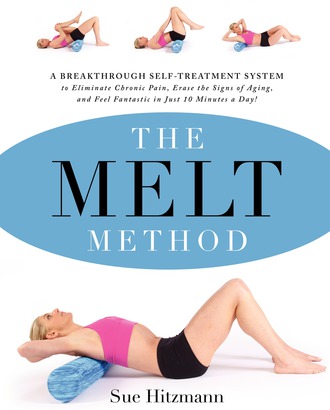 Those plagued with nagging pain that persists, even after a myriad of treatments, may finally find relief with MELT.
Those plagued with nagging pain that persists, even after a myriad of treatments, may finally find relief with MELT.
By Georgetta L. Morque
 Those plagued with nagging pain that persists, even after a myriad of treatments, may finally find relief with MELT. You can also click here for physiotherapist treatment for instant pain relief. You may also consider visiting services like this physiotherapist in Chatswood for pain relief. The recent blessing of the MELT Method by Dr. Oz has caused a flurry of interest and quite a buzz about the new self-treatment system, which has now made its way to the Rye YMCA. Eliminating chronic pain in ten minutes a day — without medicine or surgery — may sound too good to be true, but read on.
Those plagued with nagging pain that persists, even after a myriad of treatments, may finally find relief with MELT. You can also click here for physiotherapist treatment for instant pain relief. You may also consider visiting services like this physiotherapist in Chatswood for pain relief. The recent blessing of the MELT Method by Dr. Oz has caused a flurry of interest and quite a buzz about the new self-treatment system, which has now made its way to the Rye YMCA. Eliminating chronic pain in ten minutes a day — without medicine or surgery — may sound too good to be true, but read on.
The key focus of the Melt (Myofascial Energetic Length Technique) Method is the connective tissues in the body, where stored stress can manifest itself as aches and pains. Sue Hitzmann, who is a nationally recognized somatic-movement educator and manual therapist, developed the Melt Method. She researched the science of the connective tissue, or fascia, which surrounds and supports the muscles, bones, nerves, and organs, and concluded that dehydration of the fascia is the underlying cause of aches, stiffness, and pain as well as weight gain, sleep problems, and other issues. Hitzmann makes her case in her new book, “The MELT Method: A Breakthrough Self-Treatment System to Eliminate Chronic Pain, Erase the Signs of Aging, and Feel Fantastic in Just 10 Minutes at Day!”
MELT involves a series of precise movements using a soft foam roller and a variety of small rubber balls designed to rehydrate the connective tissue and boost the body’s natural healing mechanisms. Joy Jacobson, who is teaching MELT classes at the Y, refers to the connective tissue as “three-dimensional scaffolding that helps to support, protect, and stabilize every aspect of your body when it is hydrated. Aging and active living may cause the tissue to become chronically dehydrated. This causes joint compression, poor posture, energy drain, and ultimately inhibition of your sensory nervous system.”
At a demo class last month, Y members sampled some easy MELT moves, such as stepping and rolling on a small ball with the foot, which helps to draw fluid to spots that may be tight and sore. The technique is like a self-massage, without hands.
After self-assessment, a key component of MELT, the class moved on to using the foam rollers to target the lower back, calves, and knees. Afterwards, participants said they felt more grounded, taller, and freer!
While some ball therapy and excessive kneading of tight areas can cause more pain, the Melt Method’s equipment and movements are much gentler and follow four basic principles: reconnect, rebalance, rehydrate, and release. Ideally, the Method, performed for 10 to 15 minutes several times a week, can reap the maximum benefits.
Proponents of MELT claim they have not only eliminated pain but have also improved their range of motion, sleep, and digestion, flexibility and mobility, posture, mood, and overall well-being.
A former dancer who is certified in the Alexander Technique, Jacobson trained with Hitzmann in Manhattan. She is excited to bring MELT to Rye.
“It’s very different,” said Jacobson, who “melts” everyday and feels great afterwards. She says it wakes her up in the morning but doing it at night, she adds, can also help in recovery and cellular repair at the end of the day.
MELT classes will be held at the Rye YMCA April 10 and 24 and May 1 and 8 at 7 p.m. The cost is $90 for the series for Y members and $115 for non-members. Jacobson will also conduct a MELT class for Healthy Aging at Wainwright House April 8, 15, 22, and 29 at 1 p.m. The prices are the same. Another daytime class will be added at the Y in May.
Jacobson has books, balls, and foam rollers for sale. The book explains the science behind the method and provides detailed instructions on specific movements for different parts of the body with photos and diagrams. For more information, visit www.meltmethod.com or contact the Rye Y at 967-6363.















